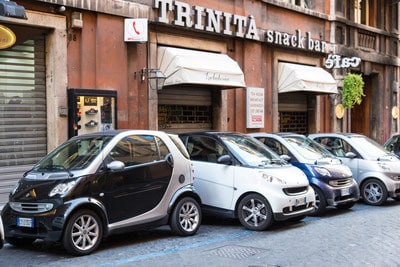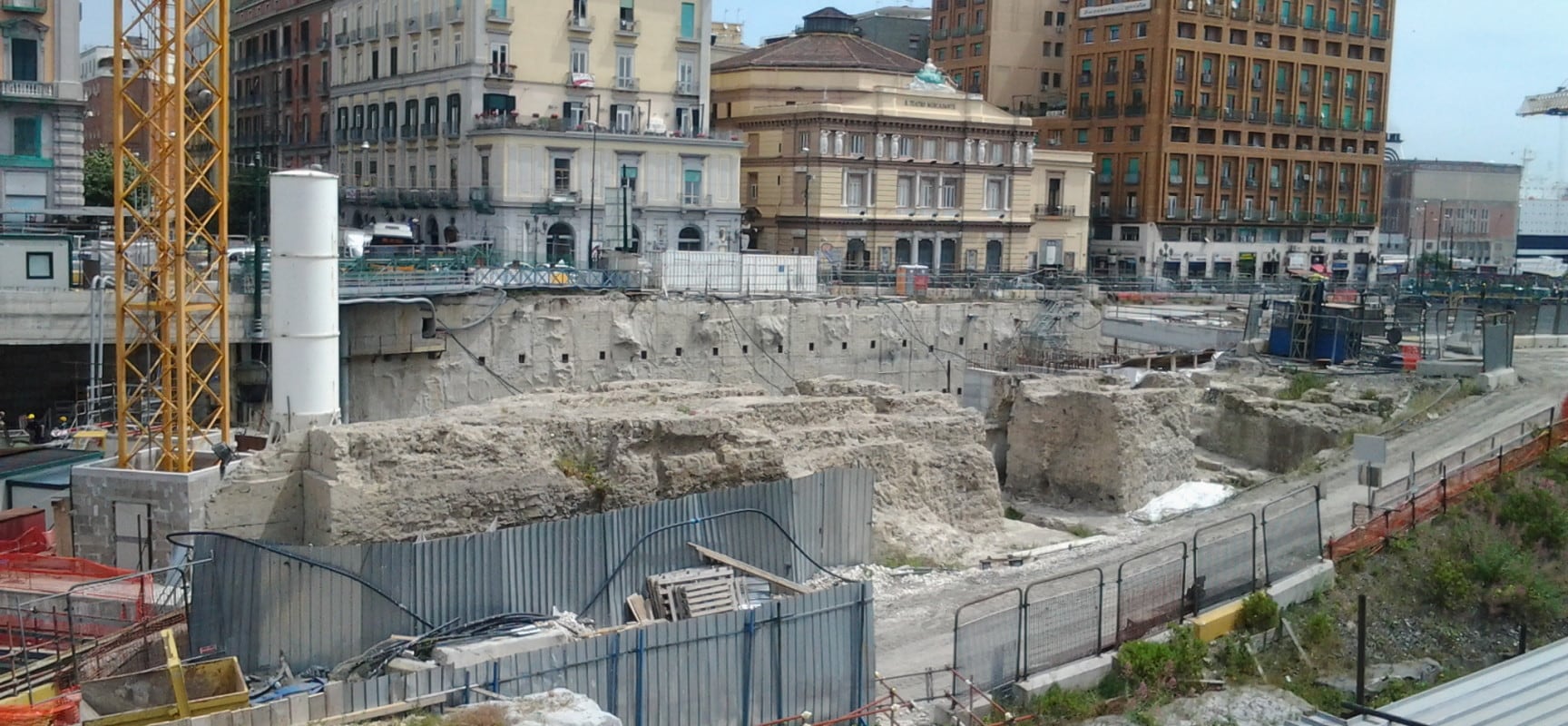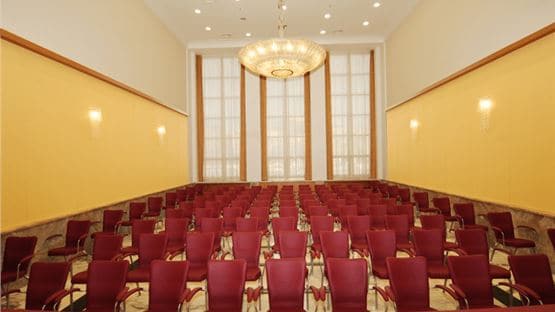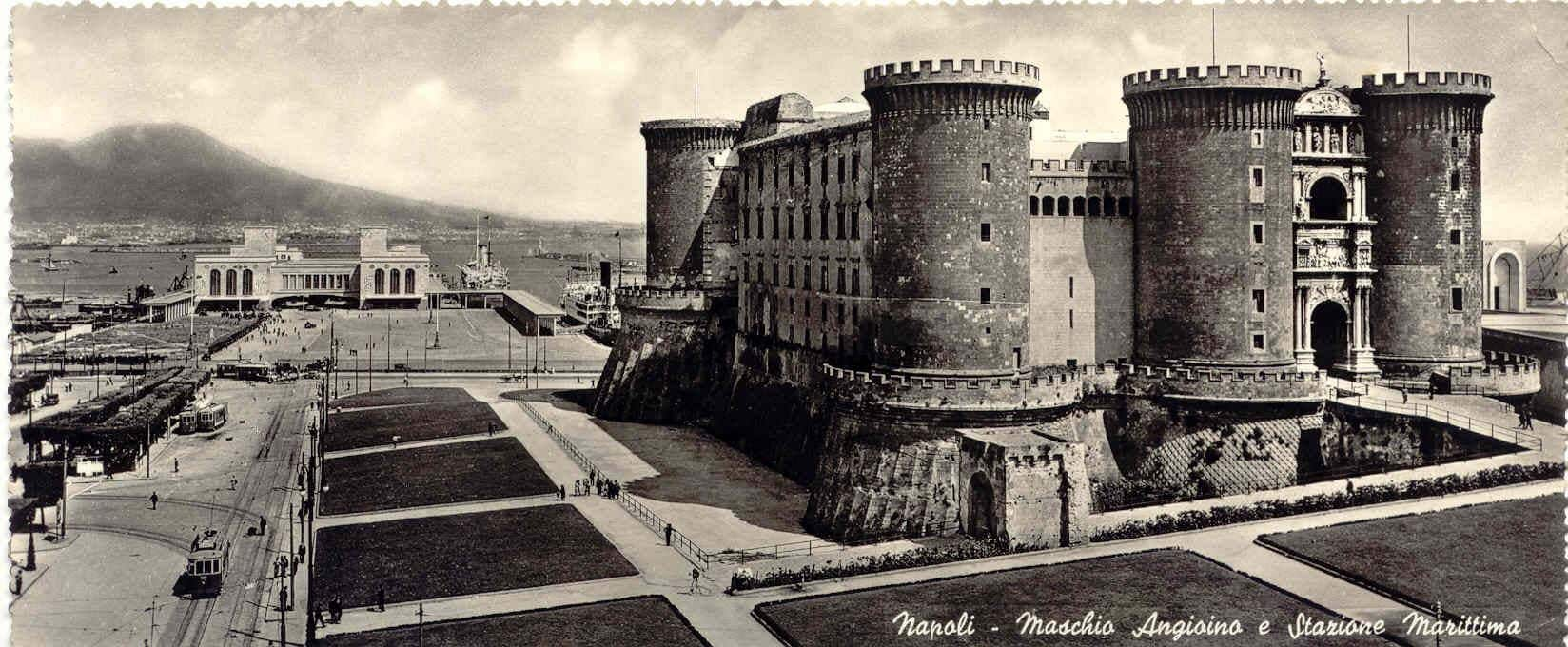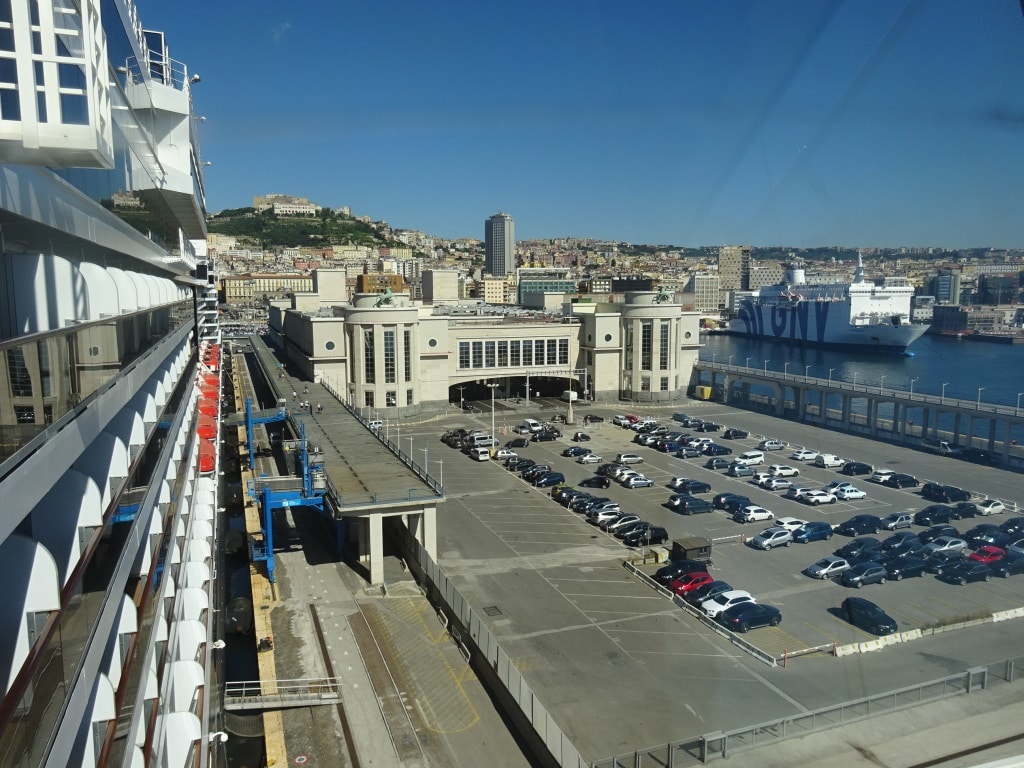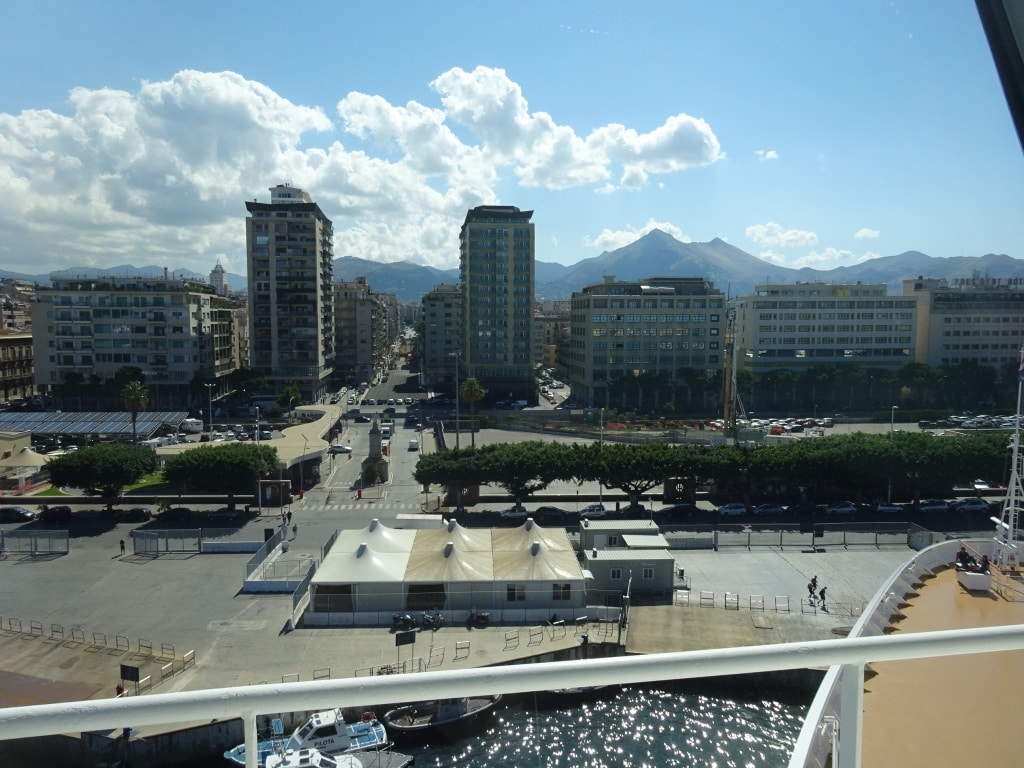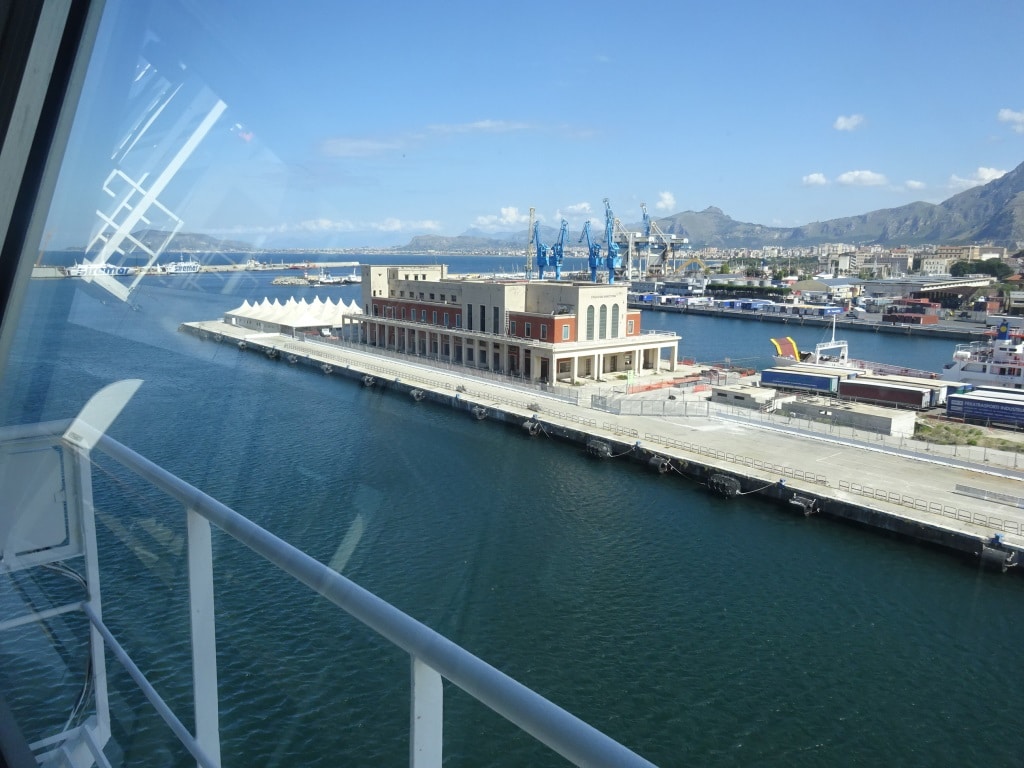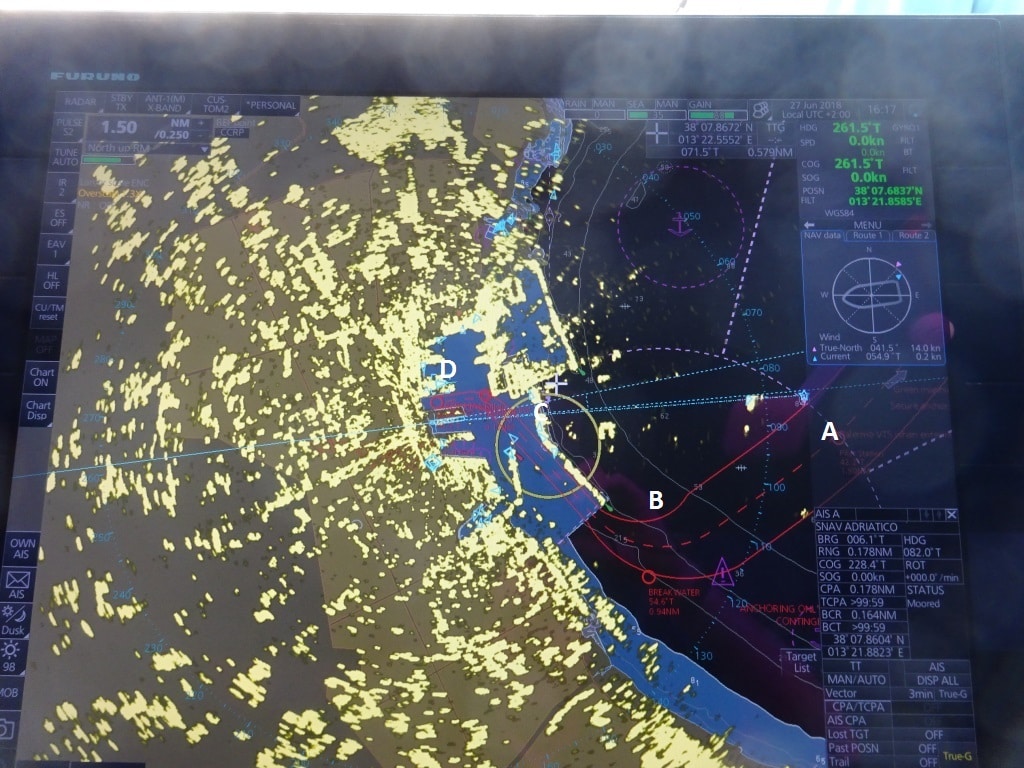Today we were in Nafplion (or Ναύπλιο in real Greek); also written as Nafplio or Navplion or Nauplion depending on the way you translate the Greek name. As we here on board are all experts in the Greek Language, we have decided based on this extensive knowledge, that the proper translation is Nafplion. Maybe because of the confusion with the name (and it has been confusing for centuries) it is one of the less well known cruise ship calls. In the summer time there is on average every other day a cruise ship inside but it is nearly all the time only one. It is very popular with small cruise ships who can dock here as long as their draft is less than 6 meters. Unfortunately the ms Oosterdam is a medium size cruise ship with a draft of 8 meters and thus we have to anchor. But the ship has six tenders and today they took care of a fast and efficient tender service.
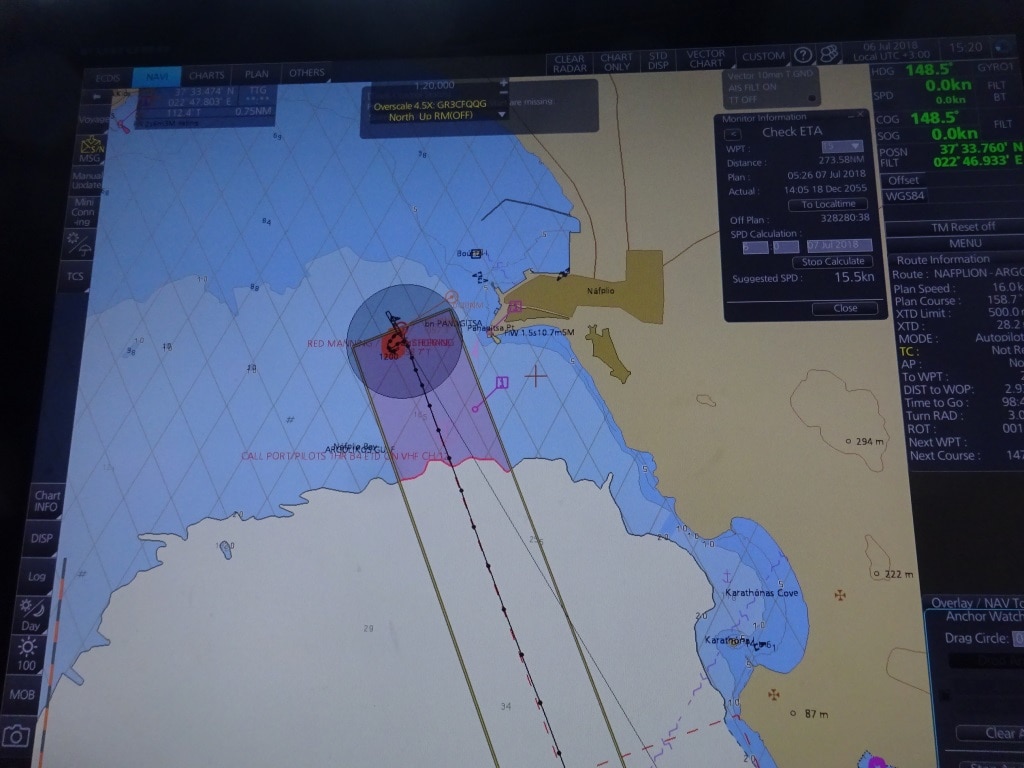
The anchorage today. Dark Blue is 10 meters going down to 5 meters. Light blue is 20 meters going down to 10 meters. And white is more than 20 meters of depth. We anchored today with 7 meters under the keel or 22 feet.
We had to anchor about half mile from the tender dock as the port has 6 meters and less depth, then there is the outer port where it goes up to 7 meters and then there is a large area which goes up to 10 meters and then another half a mile down the bay it drops away to 20 meters and then deeper and deeper. Nafplion is located at the end of a bay called the Argolic Gulf and lays on the Peloponnesus. This used to be a peninsula of the Greek Mainland but since they dug the Corinth Canal it is now officially an island as it can only be reached by ferries and over bridges.
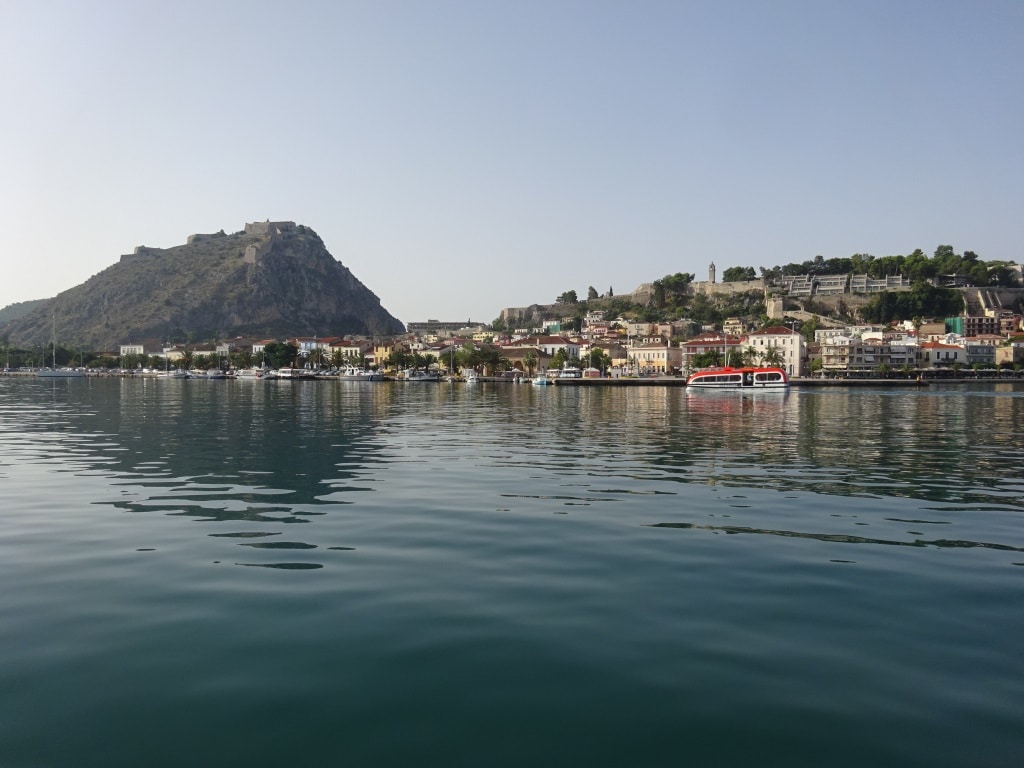
Sailing into the port with the tender. With the Fortress on top of the hill and the old town beneath it. In more modern times they have built hotels into the hill over looking the town.
It has always been an important strategic location and the Byzantines, the Ottomans, the Venetians and finally the Greeks have all been fighting over it. Although there have been fortifications here since the early middle ages, it was the Venetians who really built the place up. Expanded the fortress on the top of the hill and built a tower which guarded the natural harbor from the sea side. From the land side there were natural marshes and those are not that easy for armies to get through and thus the place was well protected. Then when the Greeks went for independence in the 1820’s, Nafplion was the first capital of the new State until they decided to move it all to Athens.
So we tendered straight into a major historical area which still has its old world Greek charm with tavernas on the sea side and a picturesque old town with many small shops. I saw one hot and despondent father returning to the ship, who had been dragged around town by mother and two teenage daughters on a shopping spree. Looking at the number of bags, they had given the Greek economy a major boost. And adding insult to injury who had to carry the bags………… Dad. What were the ladies carrying …..? Their cellphones……. If I had been on board I would have bought him a beer……………. He clearly needed one, probably more than one……………
For those who wanted more than 2000 years of local history, Holland America ran tours to the local attractions but also to the Corinth Canal and to temples and other locations out of the Greek Mythology.
I hold since today the record of the largest number of tender transits in Nafplion ever by one person as I went to and from 08.00 hrs. in the morning, to 16.00 hrs. in the afternoon. Examining one tender driver after the other; not only on tender driving skills, but also on communication, dealing with the guests and dealing with emergencies. I have now half of them done and all of them passed with ratings of 70% or higher so we are safe there. The next round will most likely be in Sarande Albania when we have to tender again.
I had never been ashore here as my ship was always at anchor, so now I could stroll into the little town. Only to stroll out again very quickly as it was very warm. Guests who decided to go on tour were the clever ones as out of town and on the mountain there was at least a nice breeze. But I can very much recommend everybody to go here, if you are into history a bit as it is very nice. I would not mind going back here in spring or autumn when it is a bit cooler…………….
Tomorrow we are in Argostolion which is located on the island of Kefalonia on the west side of the Peloponnesus. So tonight the ship will sail around the south point and then north along the west coast until we are docked there a by 10 am.
Weather: More sunshine, but a lot cooler than today (relatively spoken) 28oC or 82oF. and a gentle breeze.
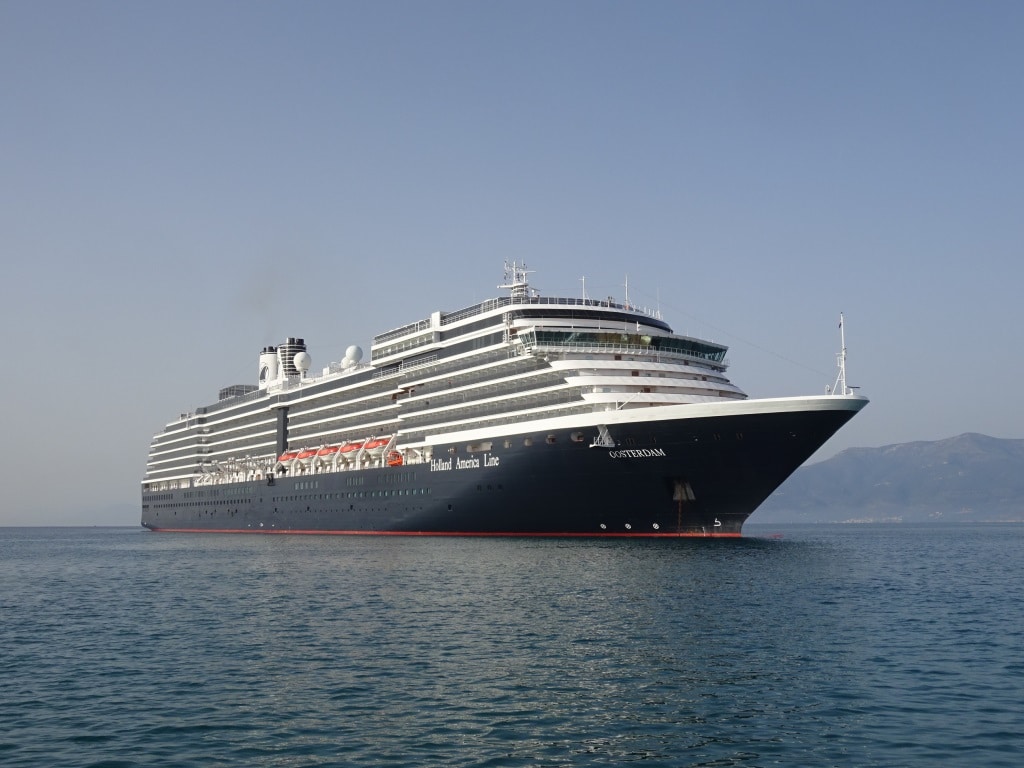
The ms Oosterdam basking in the morning sun on an almost flat sea.
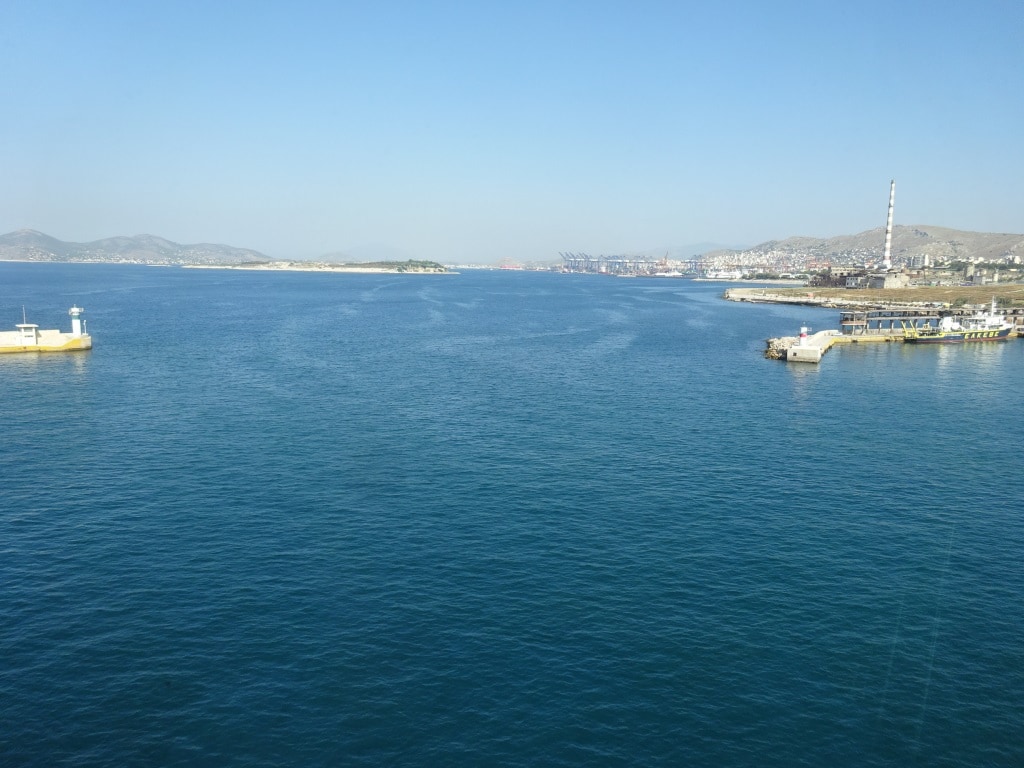
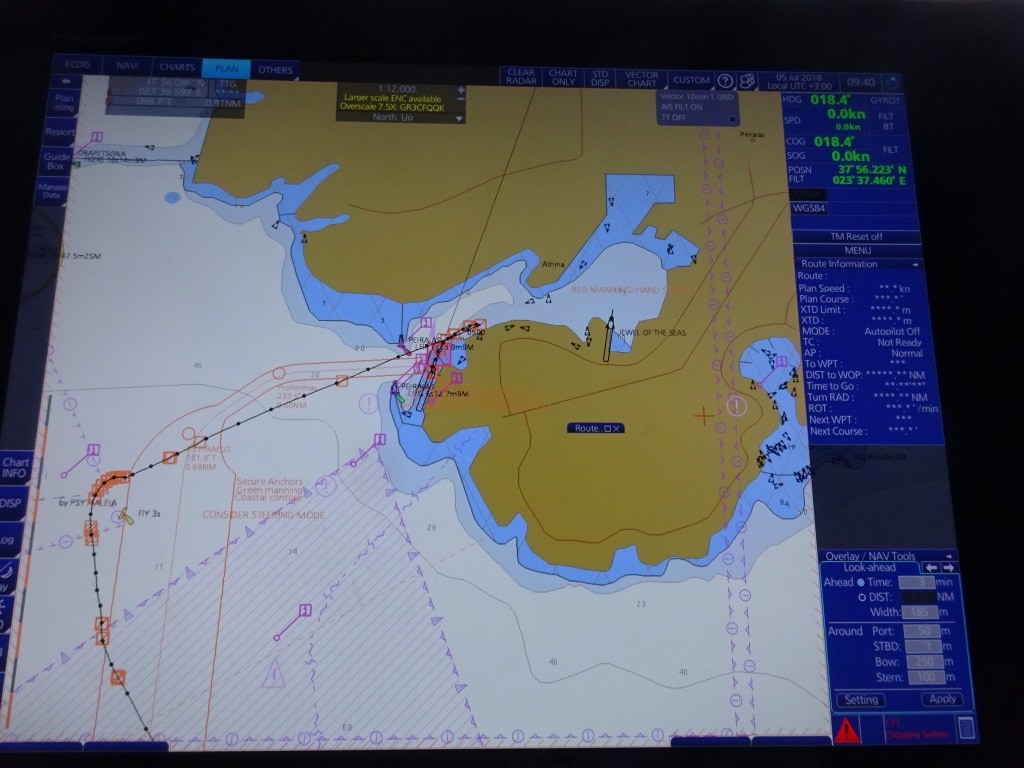
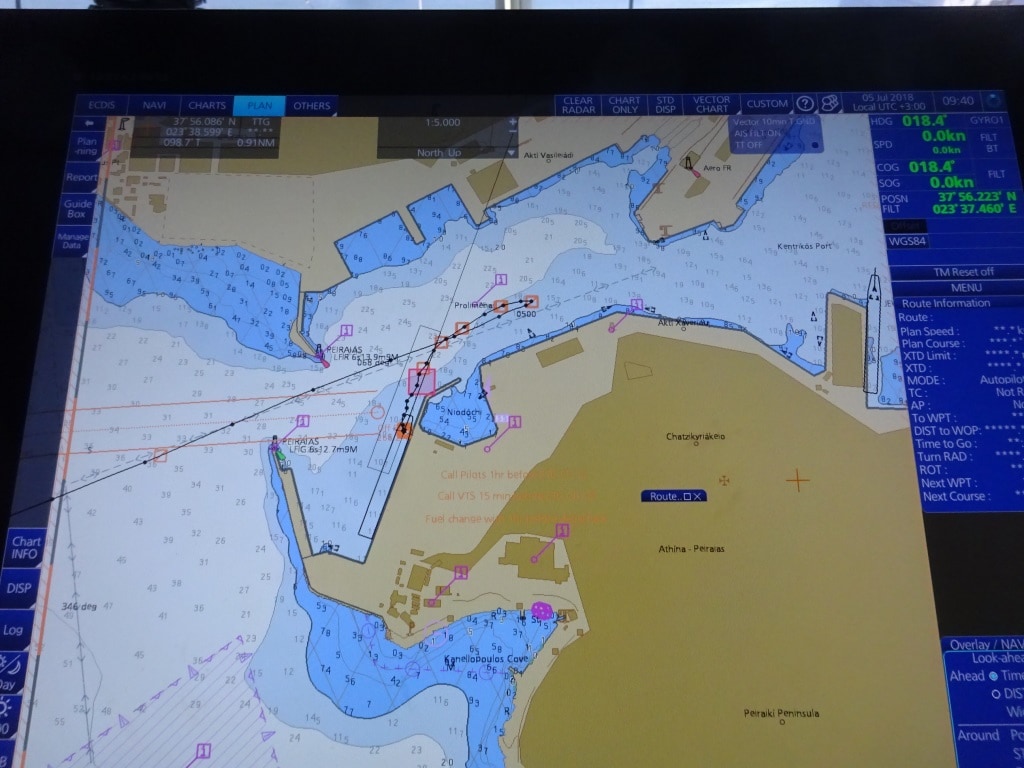
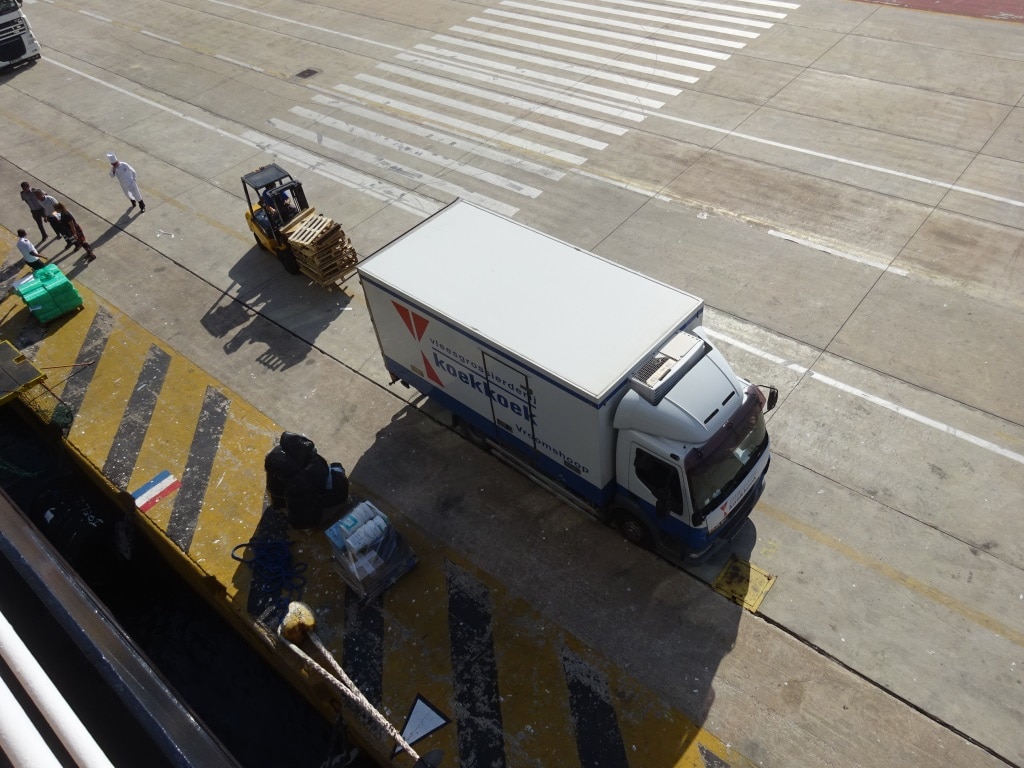
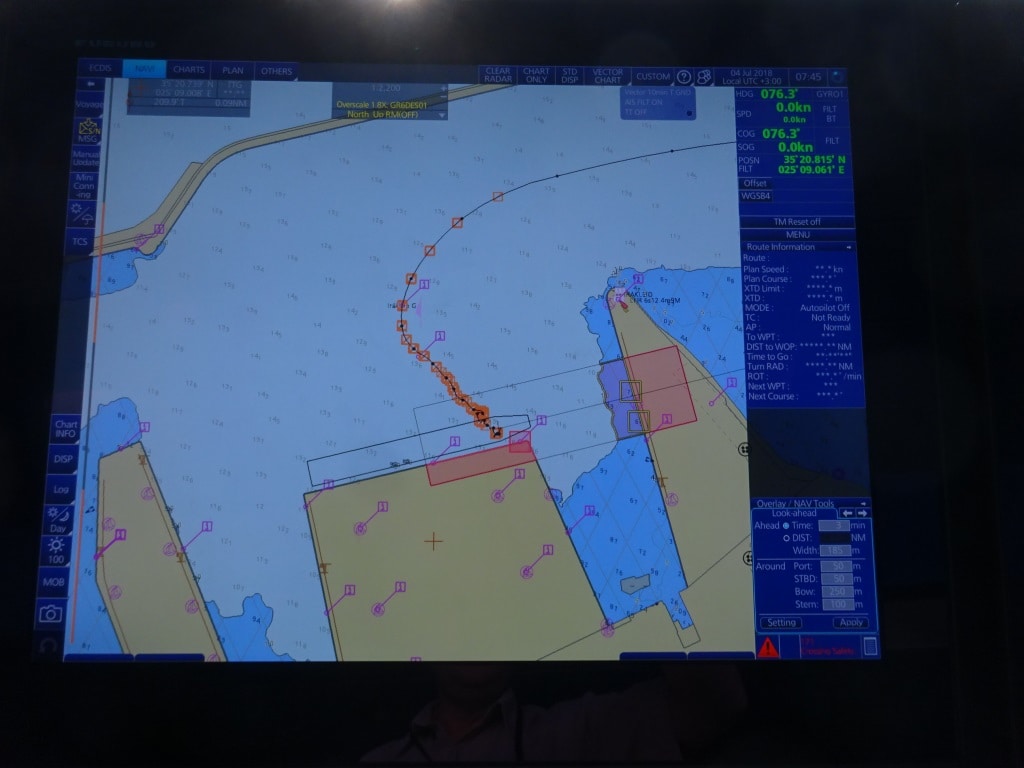
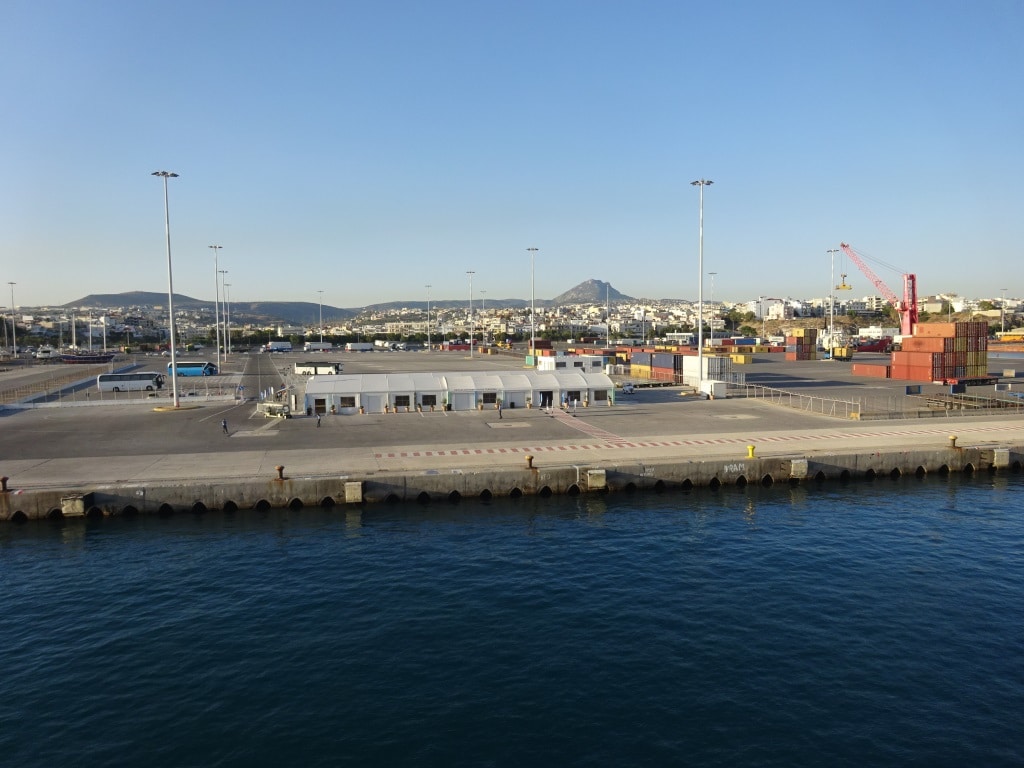
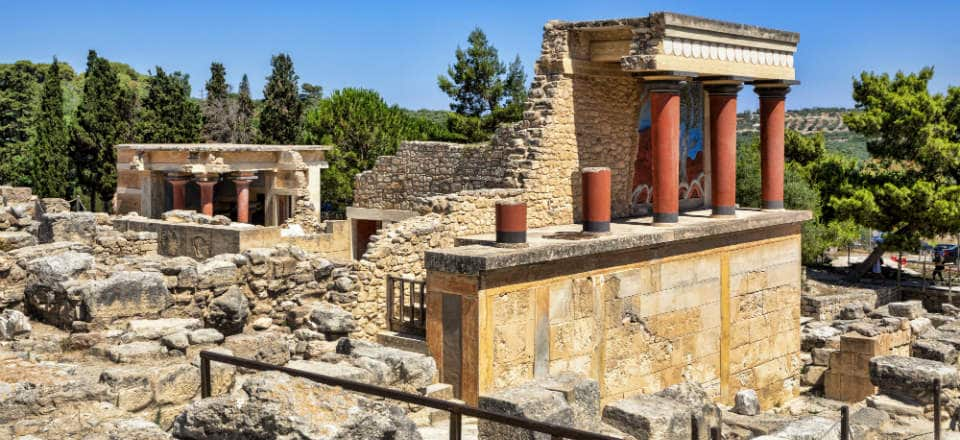
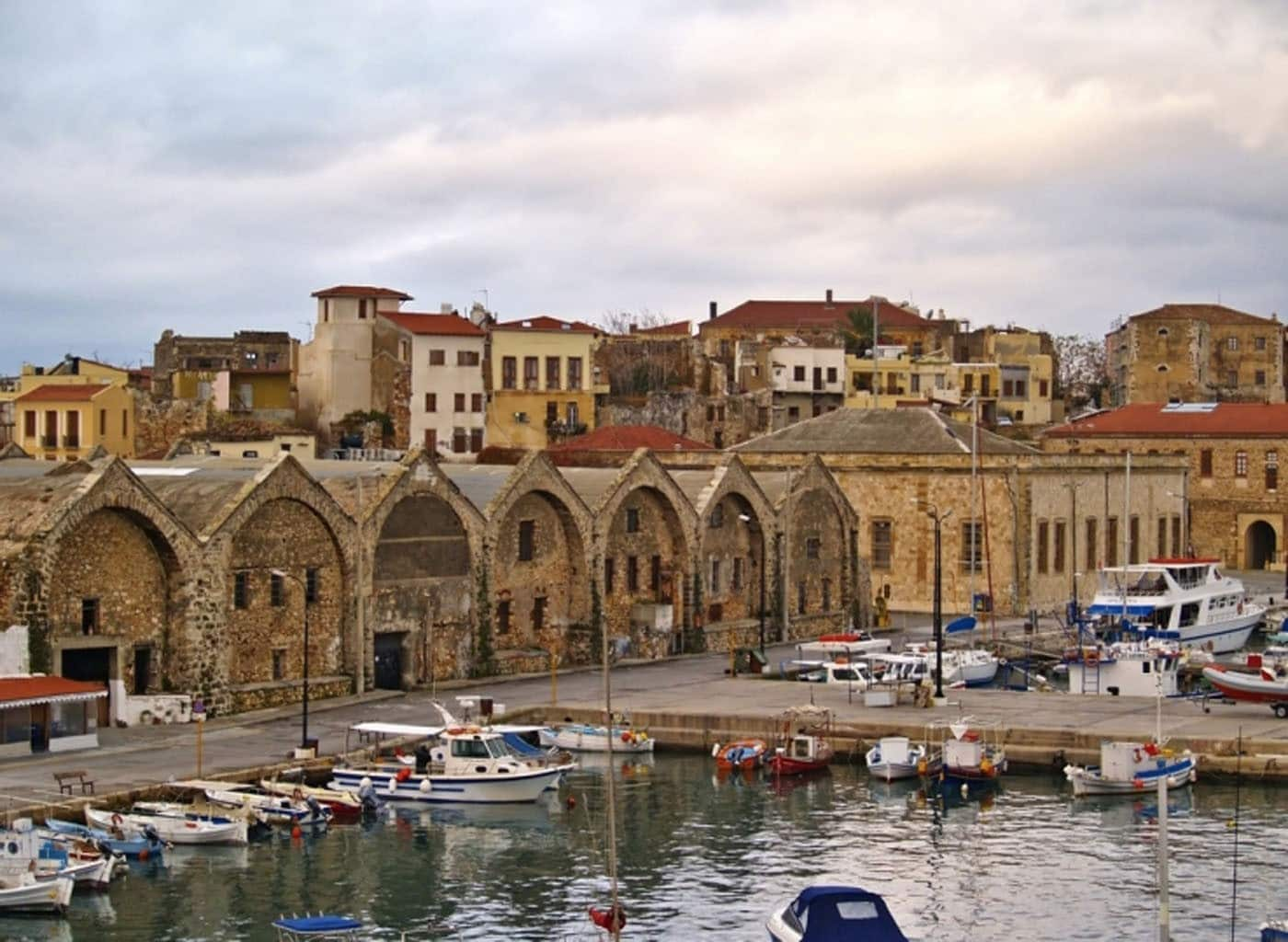
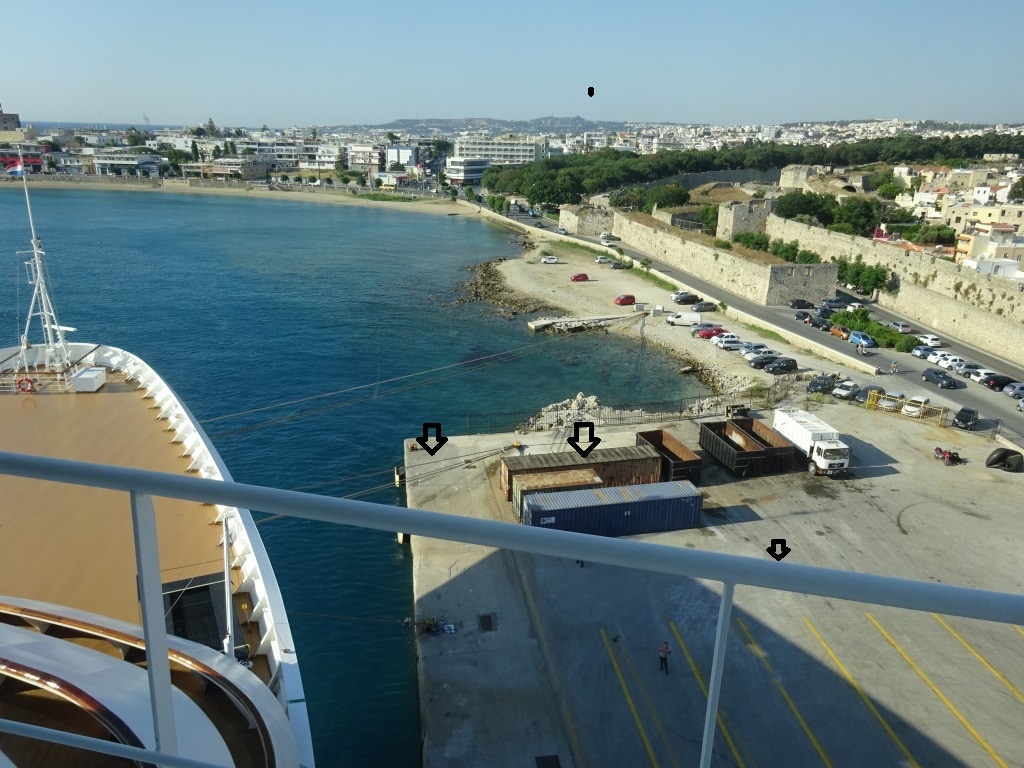
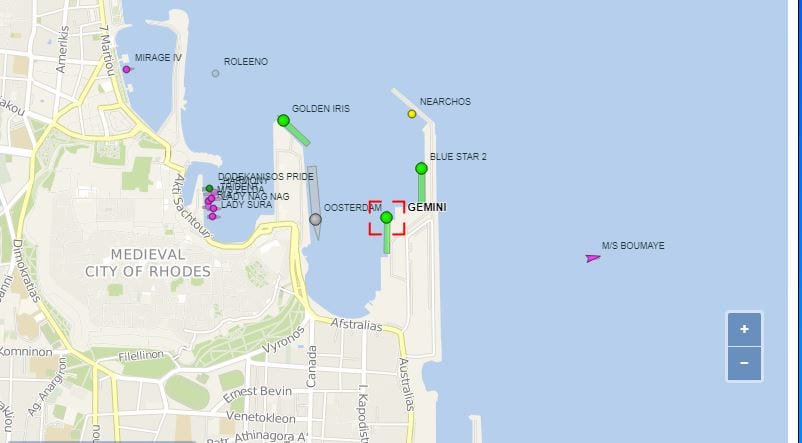
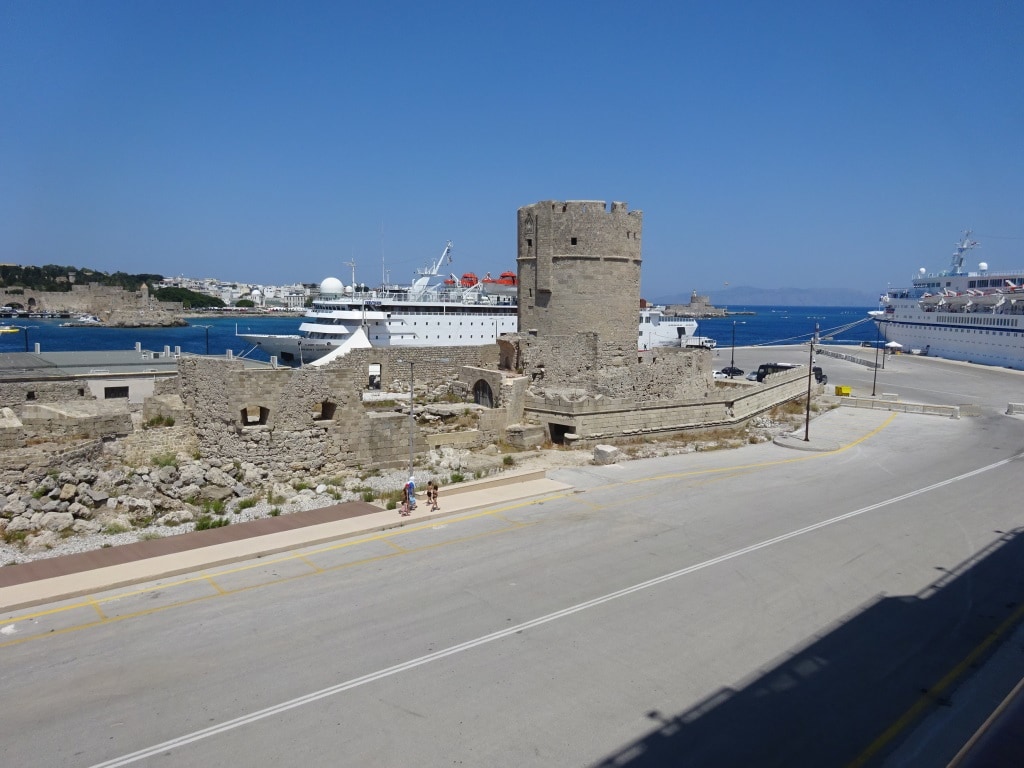
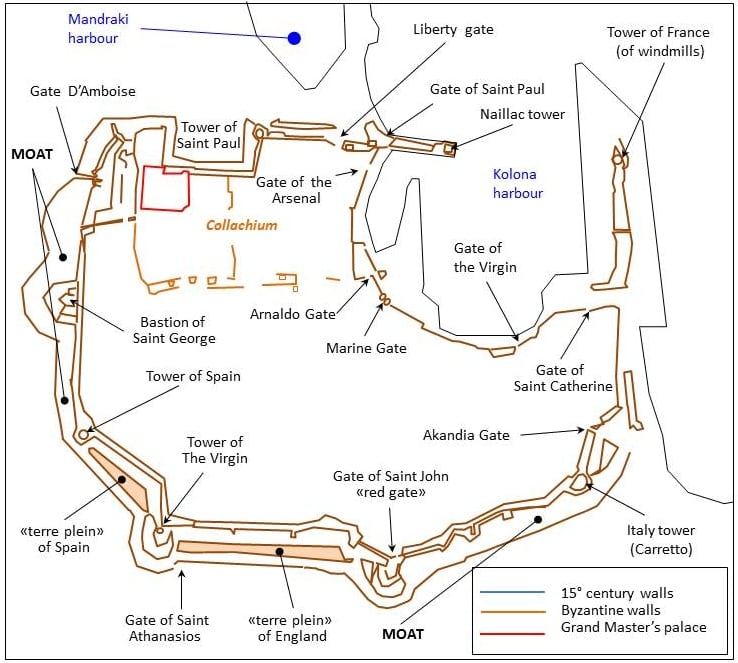
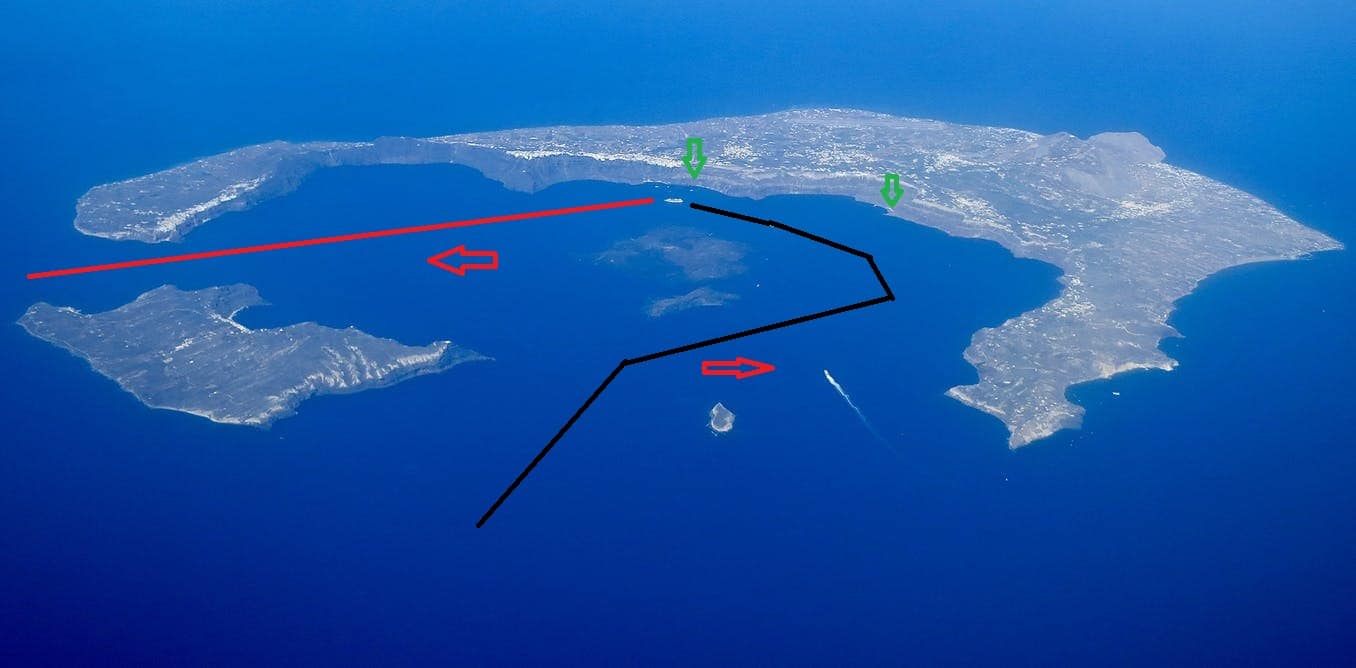
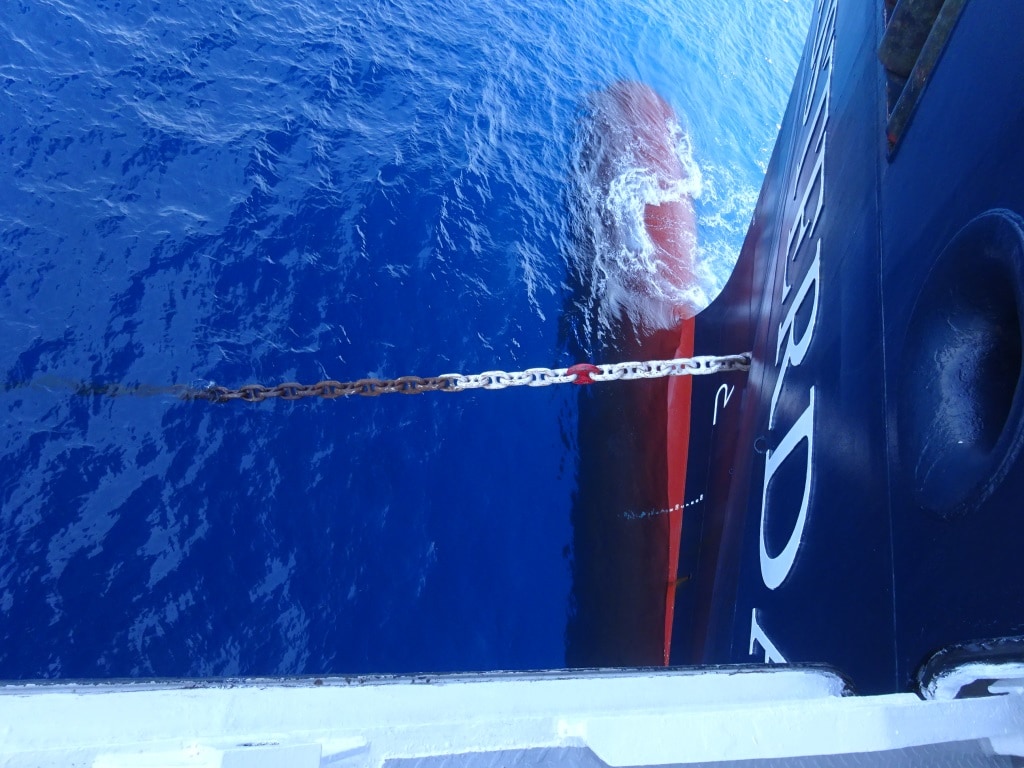
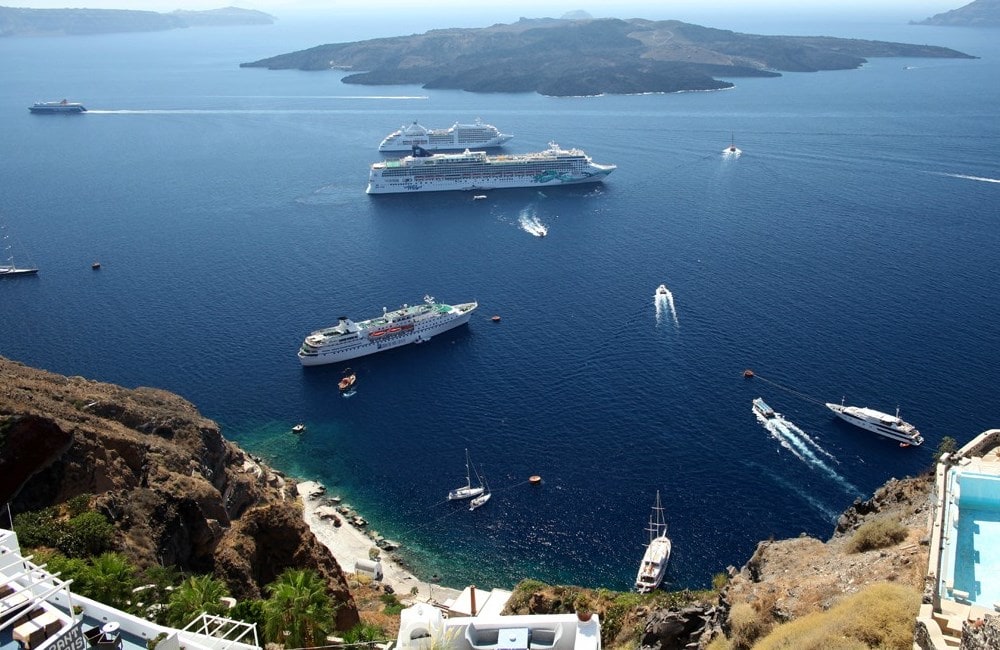
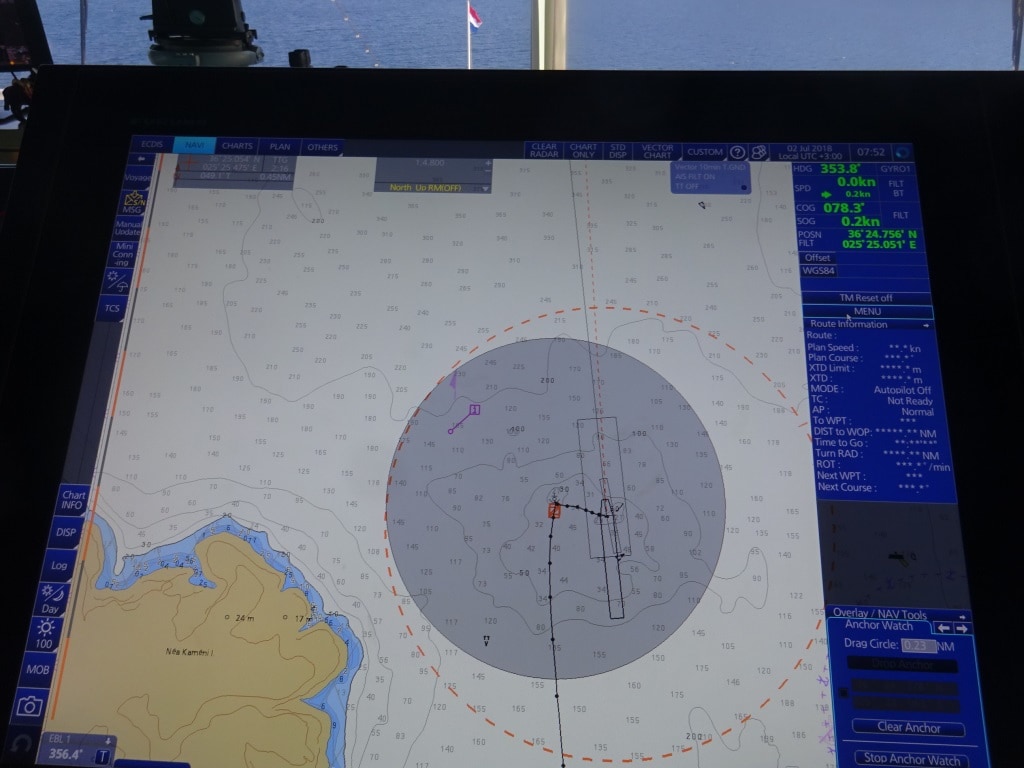
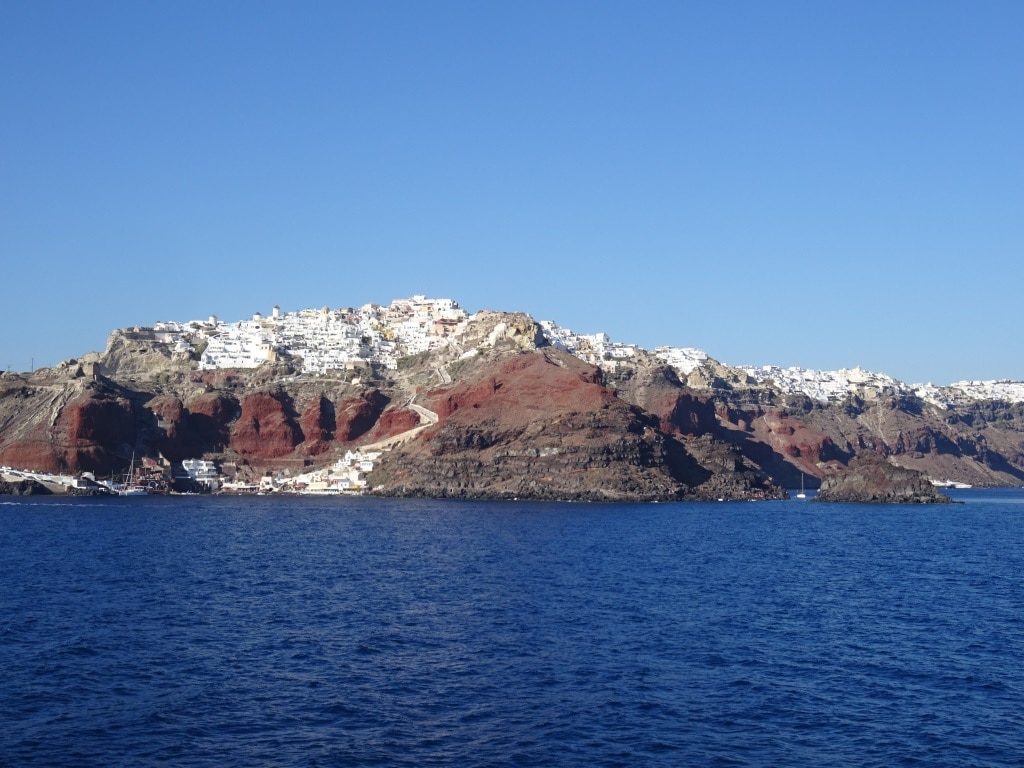
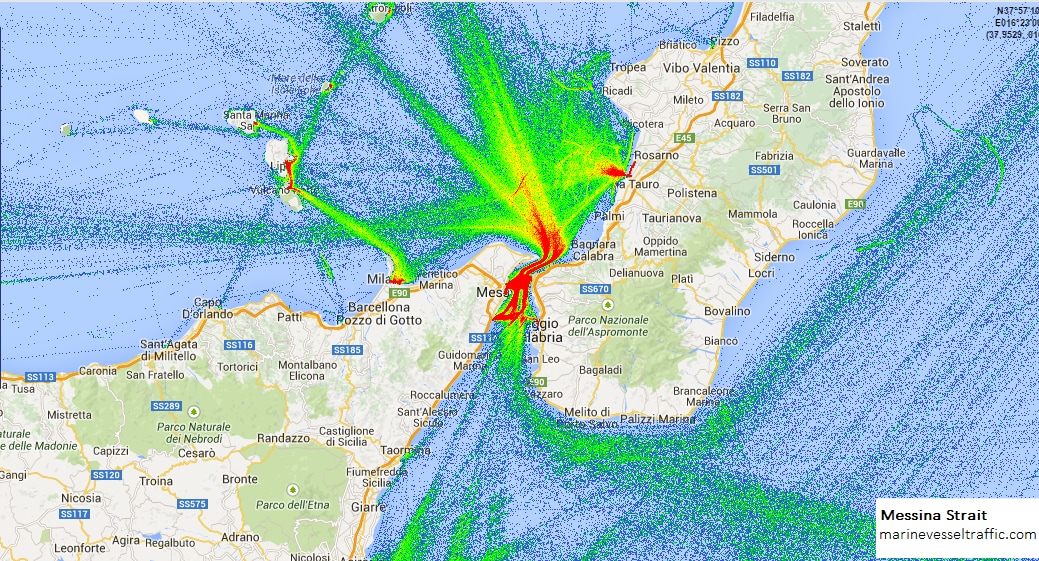
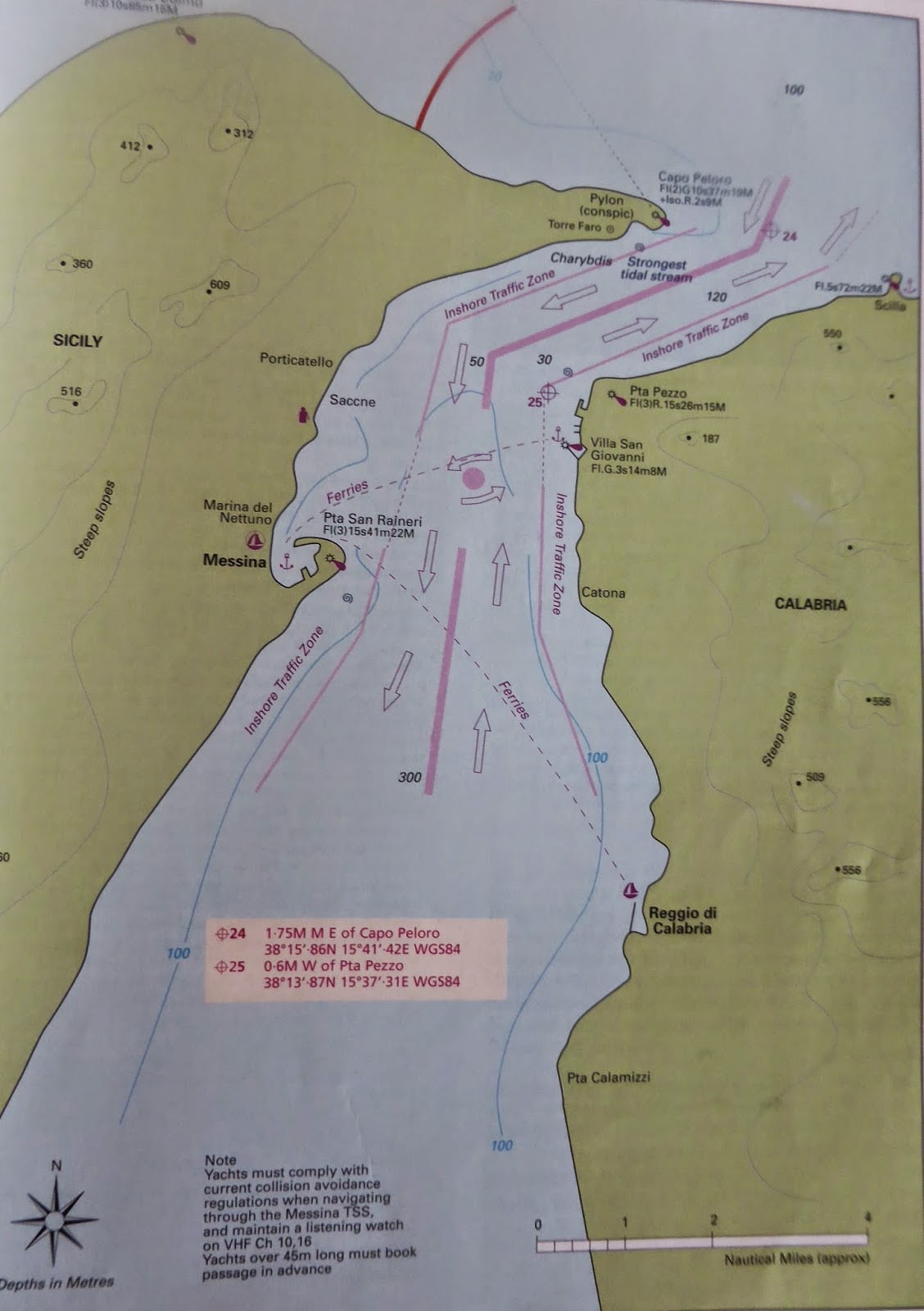
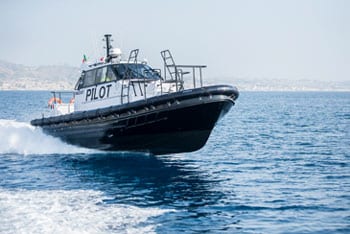
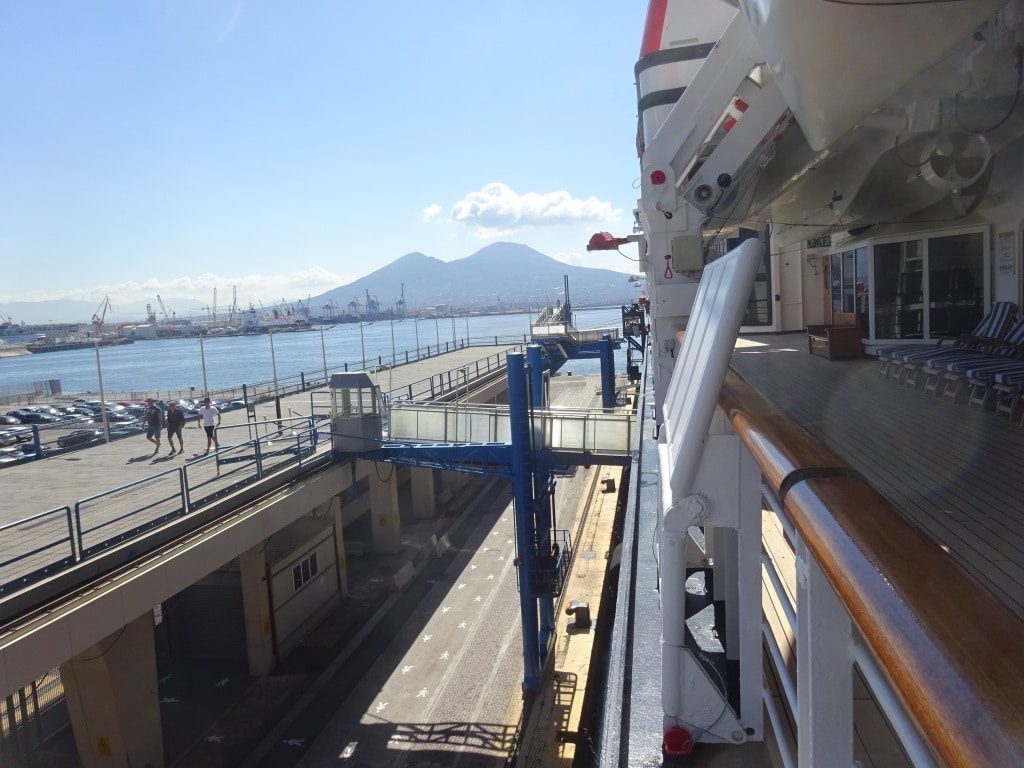
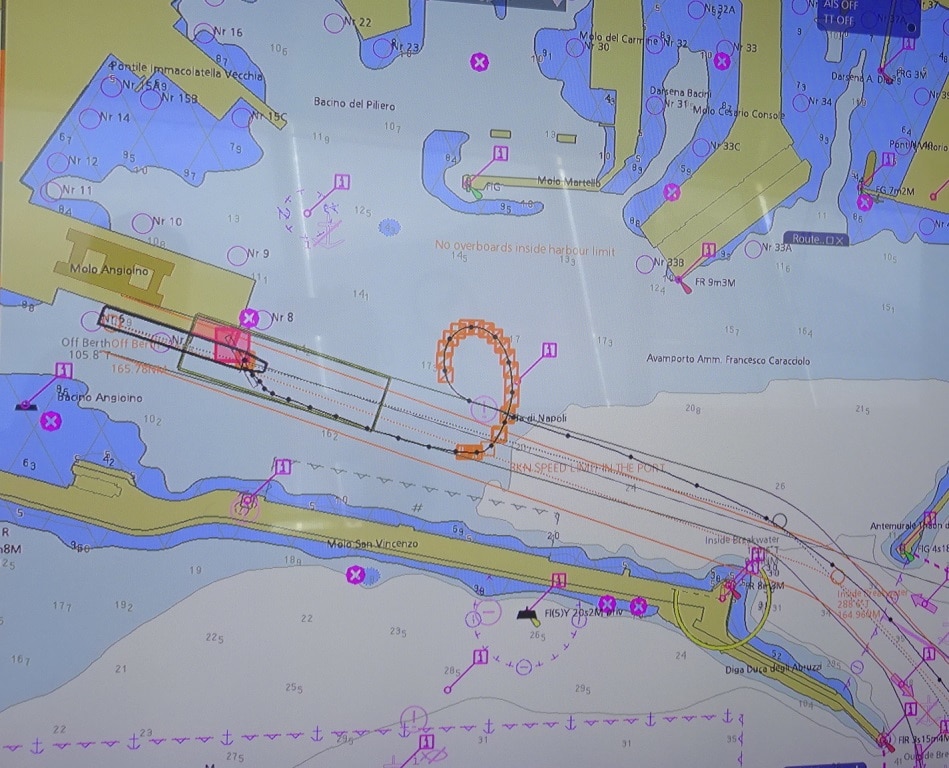
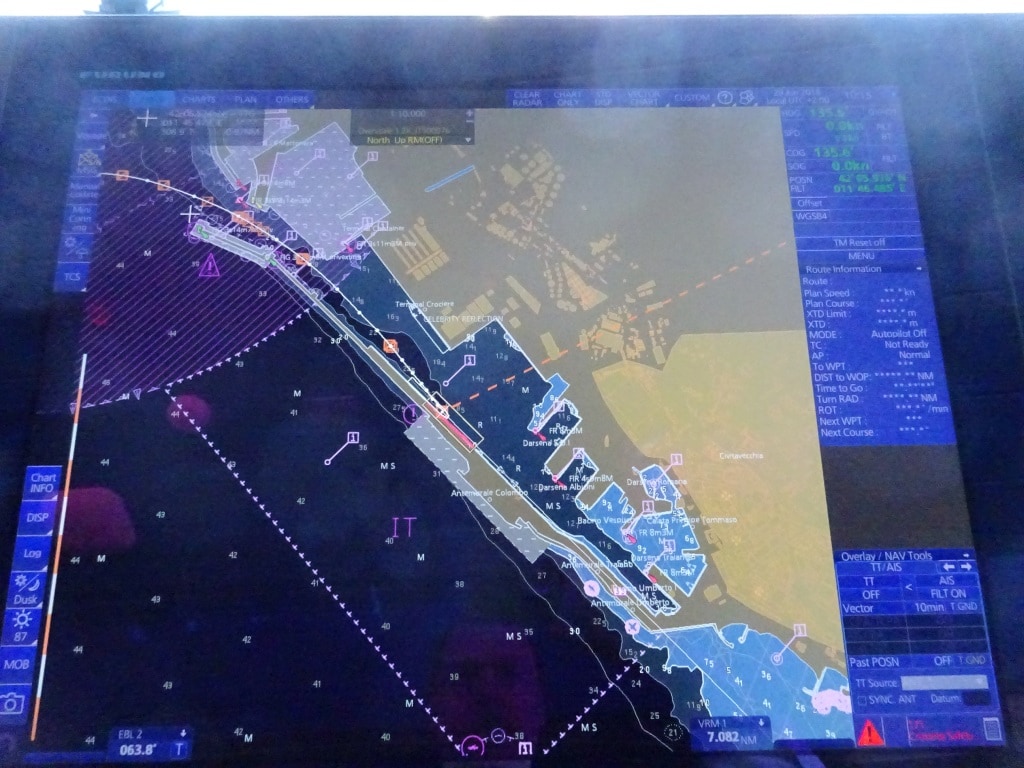
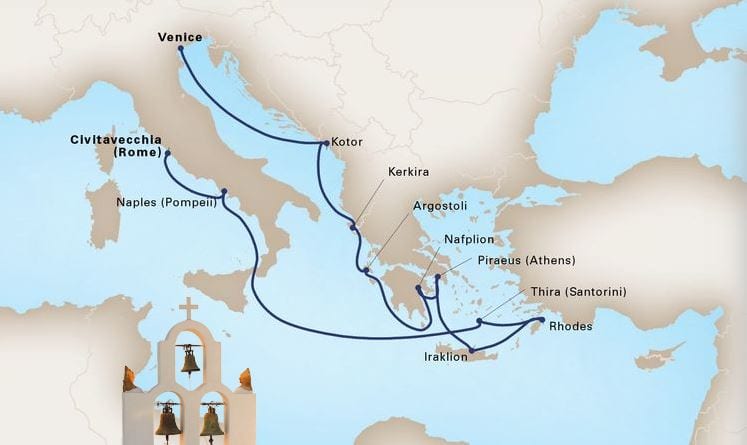 Today we said goodbye to about 90% of our guests and by 11.30 the new guests were arriving. And they are going on a 12 day cruise around Italy as we will end up in Venice eventually. But we will also call at the Greek Islands, Dubrovnik and Kotor. If everything goes well e.g. according to the port scheduling, we will have the luxury of docking in Kotor which is not that usual for larger ships. So we will see and hope. Dubrovnik is also going to be of interest as the authorities are in the process of reducing the crowds. Thus far, not yet with blocking ships or overland buses from coming in but by asking the tour company’s and cruise companies to stagger their arrivals. There are days of 7 cruise ships and at a certain moment of the day all of those on board are in that one square which makes up the center of the old town. That is not good for anybody, let alone those who live there, and thus the authorities trying to deal with it,……….. but with a gentle touch.
Today we said goodbye to about 90% of our guests and by 11.30 the new guests were arriving. And they are going on a 12 day cruise around Italy as we will end up in Venice eventually. But we will also call at the Greek Islands, Dubrovnik and Kotor. If everything goes well e.g. according to the port scheduling, we will have the luxury of docking in Kotor which is not that usual for larger ships. So we will see and hope. Dubrovnik is also going to be of interest as the authorities are in the process of reducing the crowds. Thus far, not yet with blocking ships or overland buses from coming in but by asking the tour company’s and cruise companies to stagger their arrivals. There are days of 7 cruise ships and at a certain moment of the day all of those on board are in that one square which makes up the center of the old town. That is not good for anybody, let alone those who live there, and thus the authorities trying to deal with it,……….. but with a gentle touch.